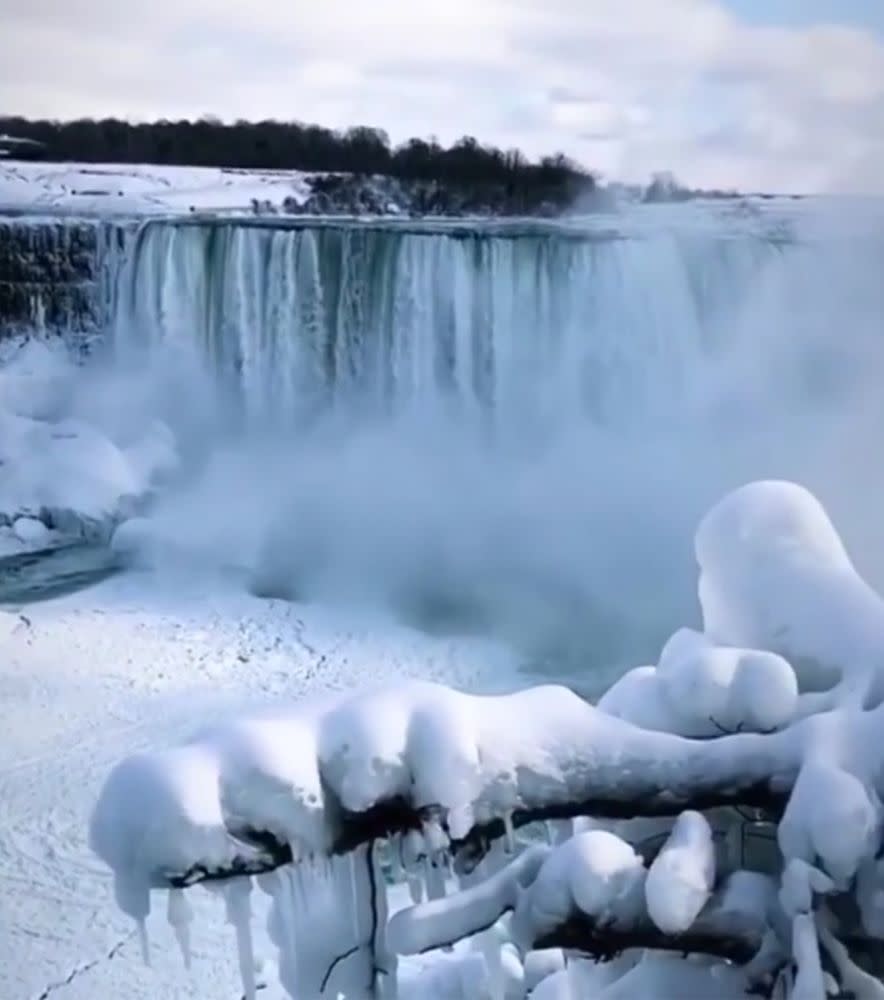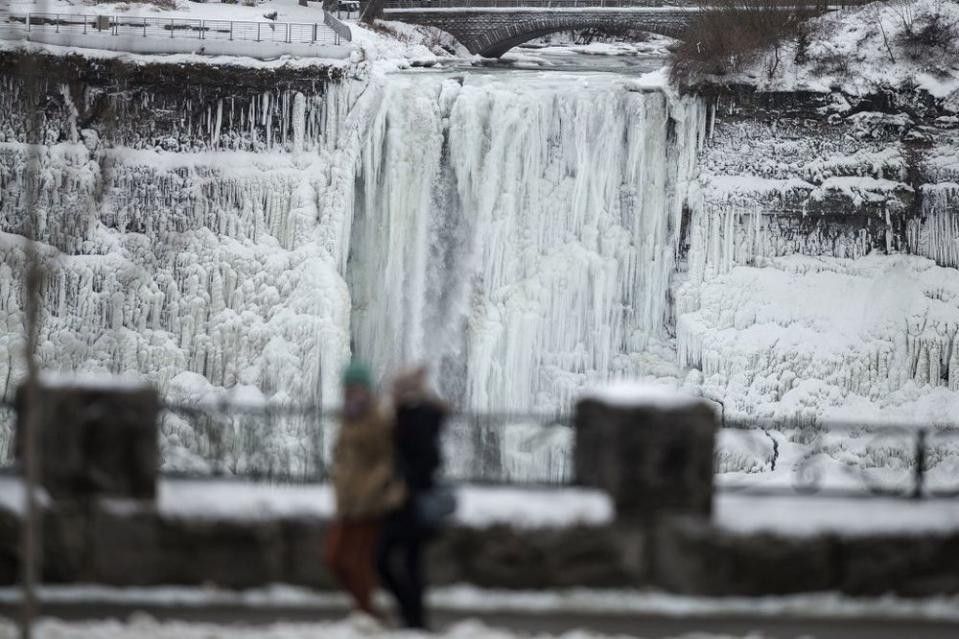Niagara Falls Is Freezing Over: See the Stunning Video that Looks Like Something Out of Frozen

The cold never bothered Niagara Falls, anyway.
As temperatures at the world famous waterfall remain below freezing, parts of the cascade have iced over, creating a stunning scene that one visitor says reminds her of the Disney movie, Frozen.
RELATED: Celeb Snow Bunnies! A-Listers Are Hitting the Ski Slopes from Colorado to the Swiss Alps
A post shared by Shannonn Kelly (@shannonnkellywith4ns) on Jan 22, 2019 at 9:30am PST
Emma Grafham, who witnessed the usually thundering falls’ flow slow and partially turn to ice, told CNN she felt like she was taking in “Elsa’s castle.”
“There was even this set of stairs that were placed just outside the look-on spot and they had so much ice on them, it looked like Elsa had just cast her arm out and summoned up some stairs like she does in the movie,” Grafham continued.

After Winter Storm Harper covered the Midwest in snow and brought freezing temperatures to the Northeast, the waterfall, located on the U.S./Canada border, technically remains flowing, but there’s ice mixed into the water and sheets of snow cover the top.
According to The Weather Channel, temperatures in the New York region are expected to rise above freezing on Wednesday and Thursday — reaching as high as 42 degrees Fahrenheit — but will likely drop again on Friday, bringing temperatures in the teens through Saturday, with a high of 26 degrees on Sunday.

RELATED: Where Kris Jenner, Lucy Hale, Michael B. Jordan and More Stars Travel in the Winter
Based on the Weather Channel‘s ten-day forecast, after Thursday, the temperatures are not expected to rise above freezing in the near future, meaning Niagara Falls could remain an icy spectacle for weeks to come.
The falls have never actually frozen solid, according to niagarafallsusa.com. Before the installation of steel ice-booms up river in 1964, large chunks of ice did occasionally block the flow of water upstream of the falls to the point that the meager flow over the edge would freeze, the site details. In more recent years, just the surface of the water and the water vapor in the air around it freezes, creating dramatic formations that can be up to 40 feet thick. The strong current of the river, however, ensures water is still flowing underneath.

